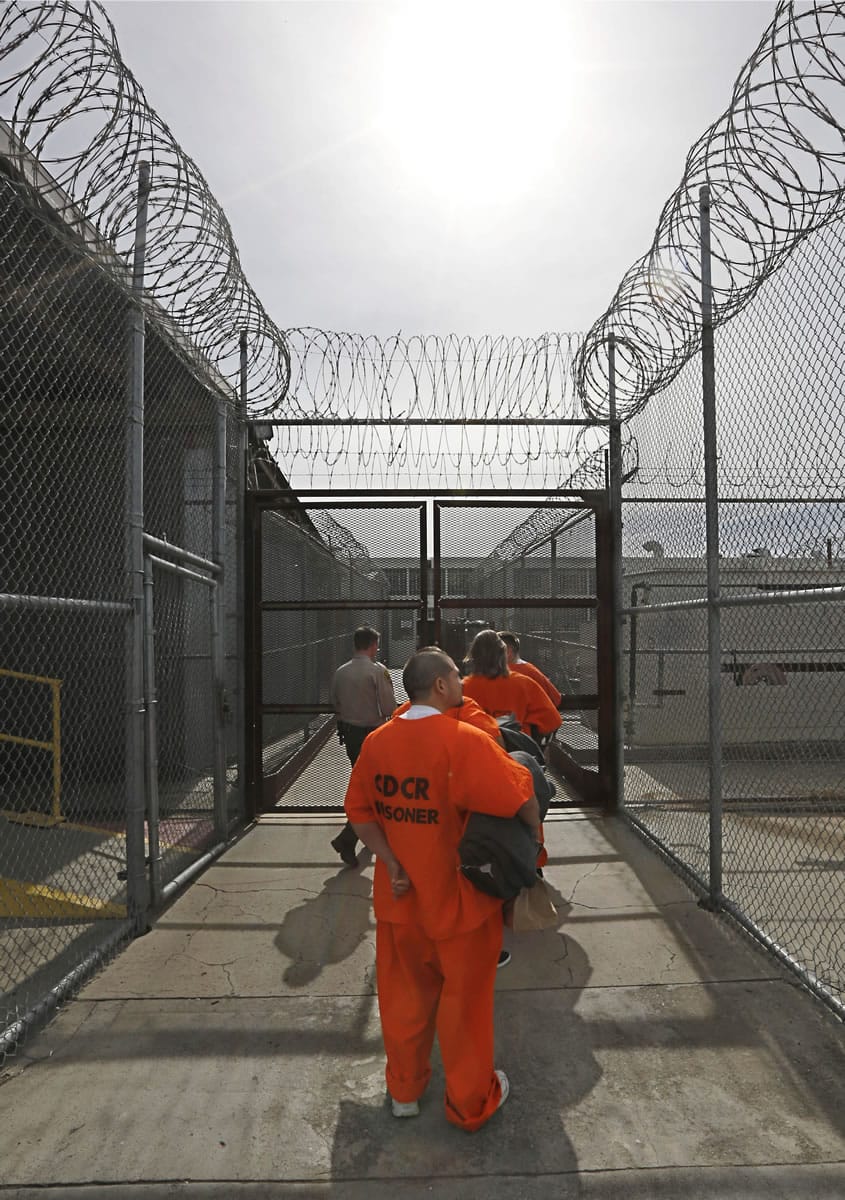SACRAMENTO, Calif. — California counties are confounding the state’s court-ordered efforts to sharply reduce its inmate population by sending state prisons far more convicts than anticipated, including a record number of people with second felony convictions.
The surge in offenders requiring state prison sentences is undermining a nearly 3-year-old law pushed by Gov. Jerry Brown. The legislation restructured California’s criminal justice system to keep lower-level felons in county jails while reserving state prison cells for serious, violent and sexual offenders.
The law initially reduced the state prison population by 25,000 inmates and brought it close to the level demanded by a special panel of three federal judges who ruled that a reduction in crowding was the best way to improve treatment of inmates.
But the inmate population is rising again, led by a record increase in the number of second felony convictions for those who already had a prior conviction for a serious crime.
Counties, where prosecutors have discretion in filing such charges, sent nearly 5,500 people with second felony convictions to state prisons during the 2013-14 fiscal year, a 33 percent increase over the previous year and the most since California enacted the nation’s first three-strikes law in 1994 that required life sentences for offenders convicted of three felonies.
The number climbs to 6,044 two-strike offenders last year if parole violators returned to prison with new second-strike sentences are included, a 20 percent increase.
The trend is complicating the state’s mandate to meet a prison population cap by February 2016. Last month, the federal judges reluctantly gave Brown’s administration two additional years to comply by taking steps that include earlier releases for some inmates sentenced on a second strike.
Partly as a result of the increase in second-strike offenders, the prison population of 133,000 inmates last June is projected to grow to 143,000 by June 2019, despite all the steps the state is taking to comply with the federal court order and reduce the population to about 112,000 inmates.
State prisons currently hold more than 34,000 second-strikers, about a quarter of the total inmate population.
Second-strike convictions had been generally declining since 1999. They began rising sharply about the same time as the realignment law took effect in October 2011, according to figures from the California Department of Corrections and Rehabilitation that were reviewed by The Associated Press, though there are competing theories on the reasons for the increase.
“We’re not quite sure what’s behind the trend. When you see such a drastic increase year-over-year … that kind of suggests that there’s been some kind of behavior change at the county level, in terms of how they are charging, whether they are choosing to charge individuals as second-strikers or not,” said Aaron Edwards, a corrections analyst with California’s nonpartisan Legislative Analyst’s Office.
Judges are imposing longer prison sentences for drug, property and other nonviolent crimes since criminal justice realignment became law, according to an analysis by the corrections department. Those sentences are increasing even as the length of sentences for violent crimes declined, leading to a net increase of 3.3 months in the average prison sentence since realignment.
Mark Zahner, chief executive of the California District Attorneys Association, said prosecutors are not to blame. “We’re convinced that it’s not any kind of change in charging practices on the part of the DA’s offices,” said Zahner, who said he had spoken with virtually all of the county prosecutors in the state.
Nevertheless, the California Judges Association has asked judges to respond to the increase in second-strike convictions later this spring.
Corrections spokeswoman Deborah Hoffman said the department is examining the trend because it represents the largest jump in the state prison population, but could not say what additional steps the administration is considering.
The two-strikes portion of the law doubles the sentence of a criminal convicted of any felony if they have one prior conviction for a serious or violent felony. It means offenders will be sentenced to state prison and not county jail, and must serve at least 80 percent of their sentence.
The second-strike does not need to be serious or violent to qualify for an extended sentence.



